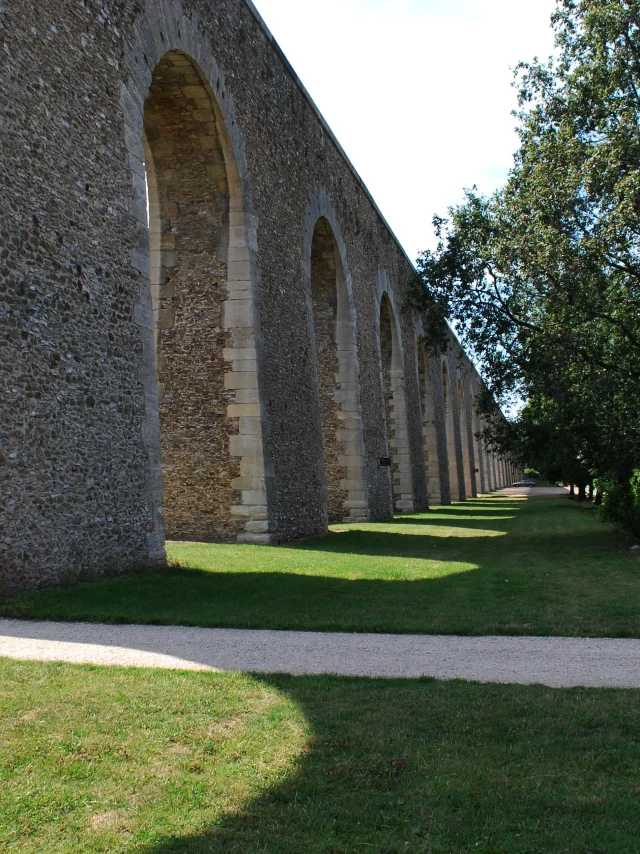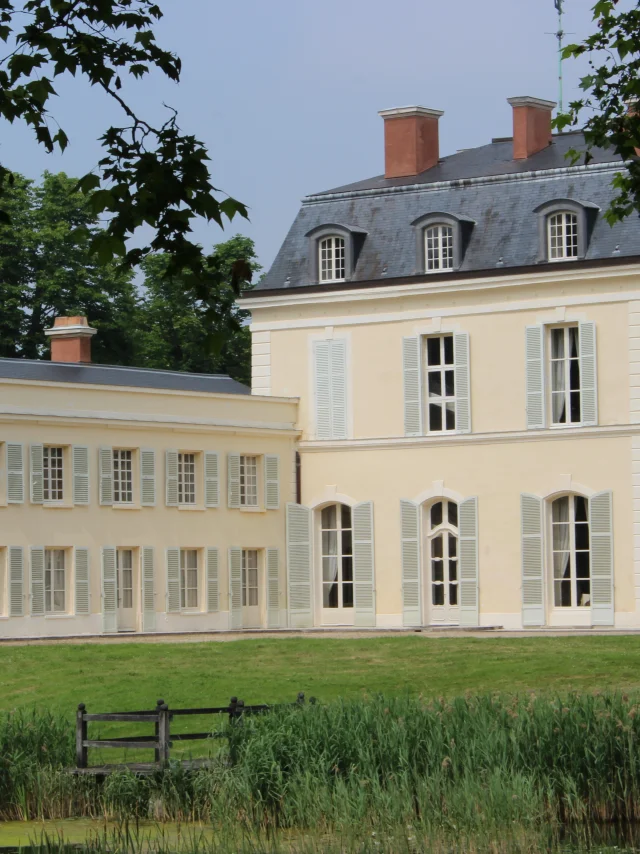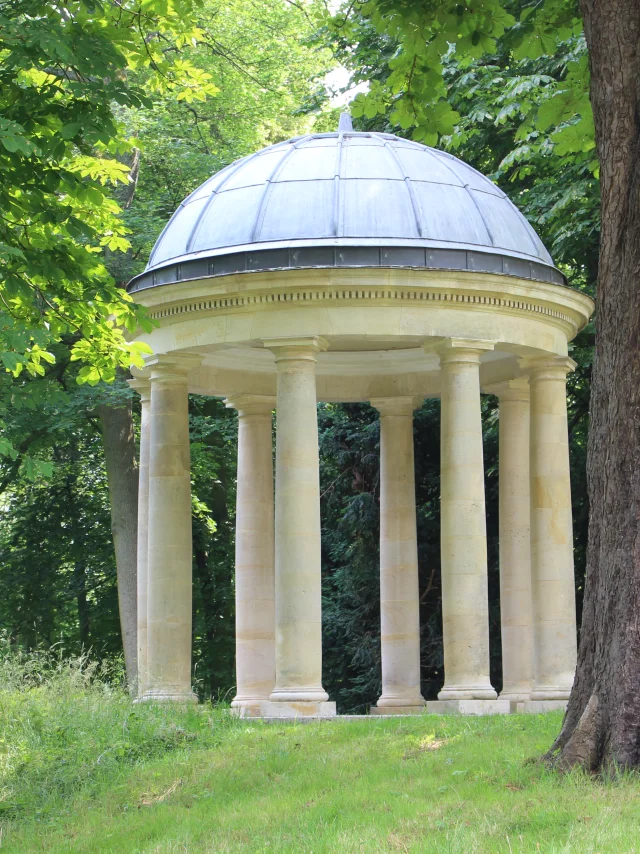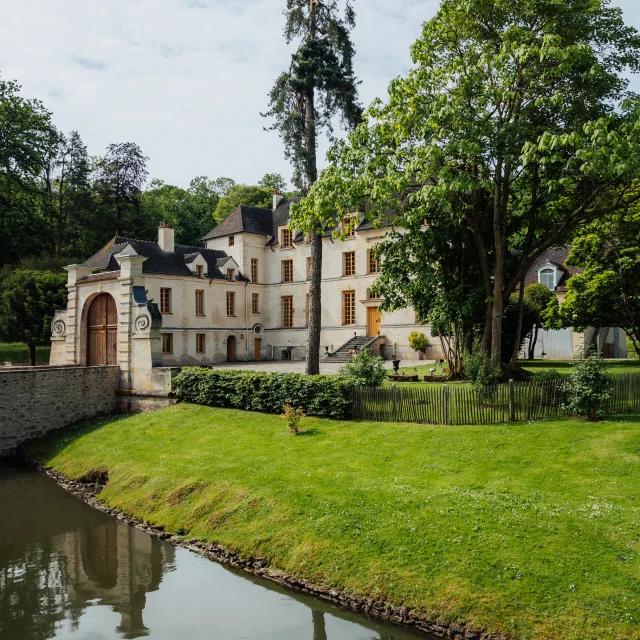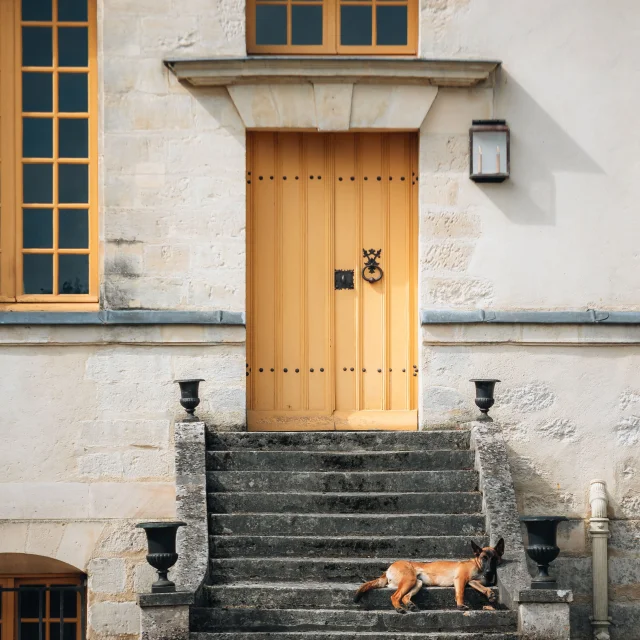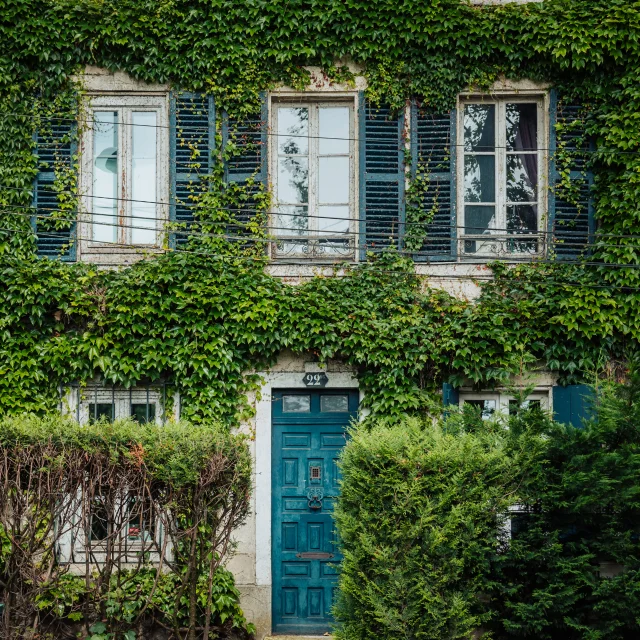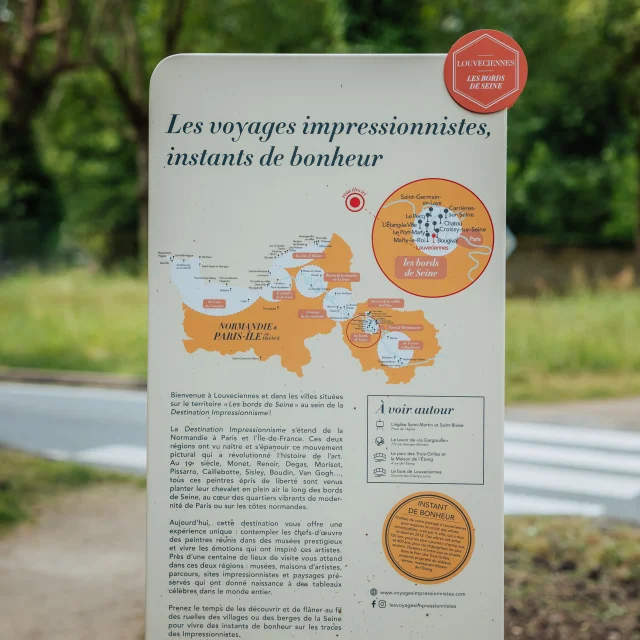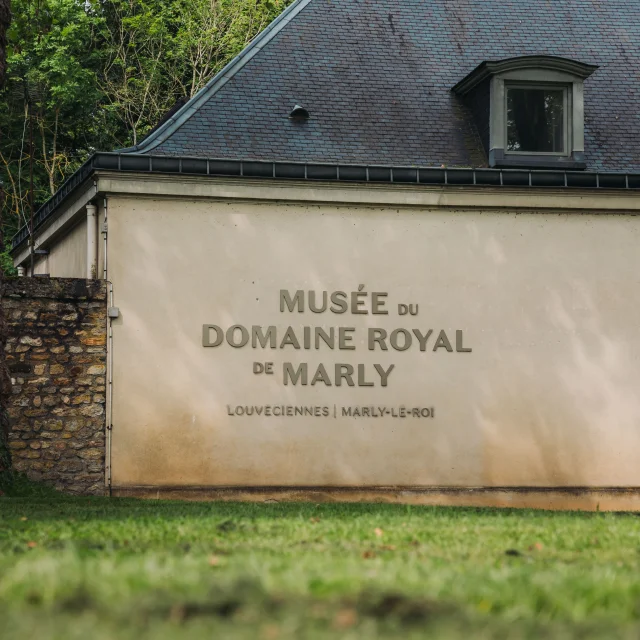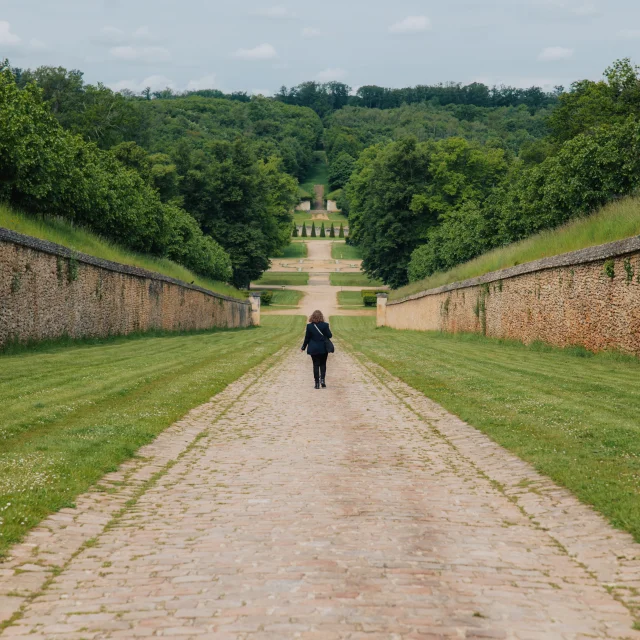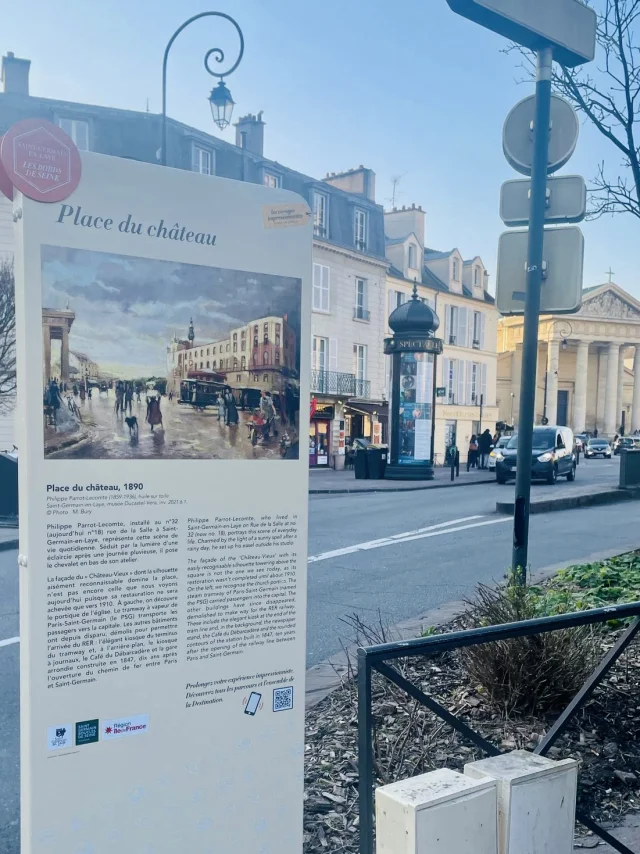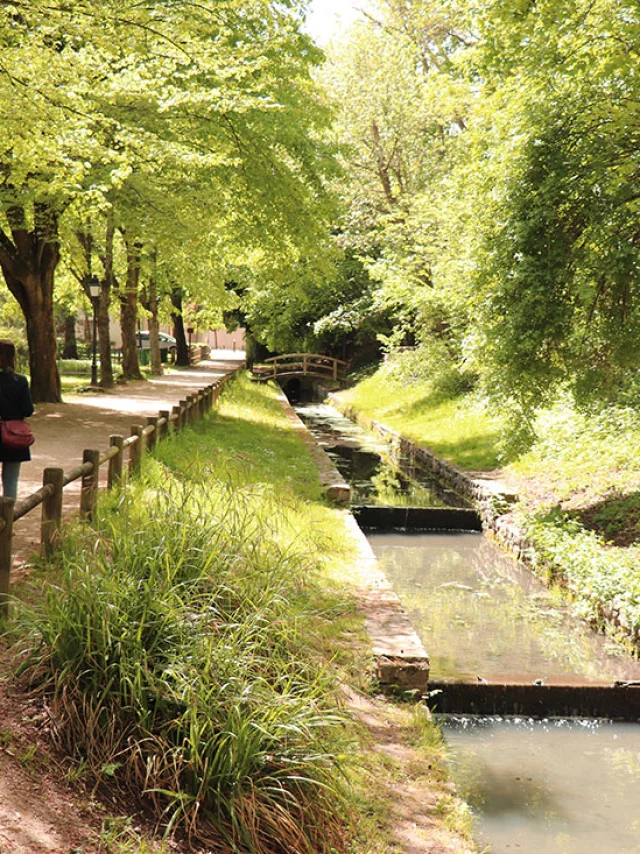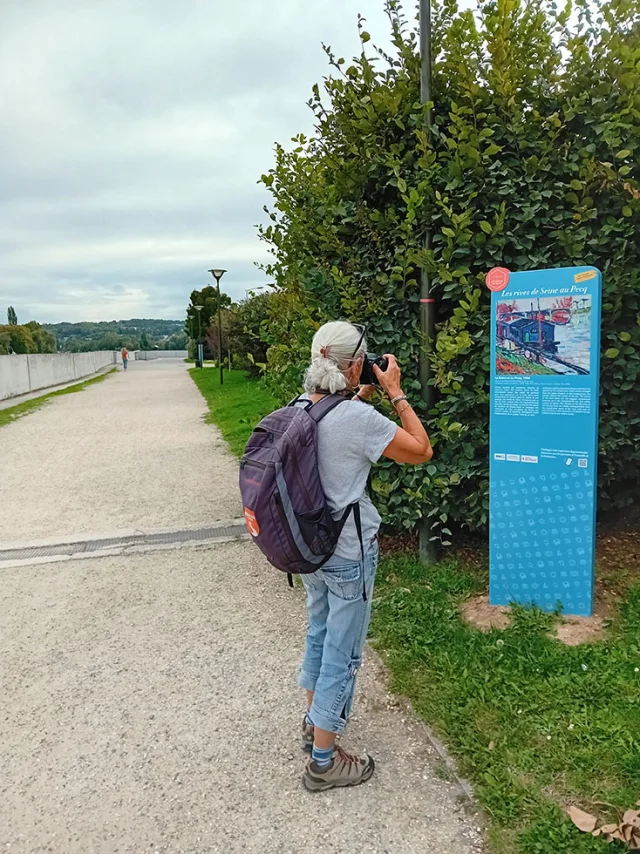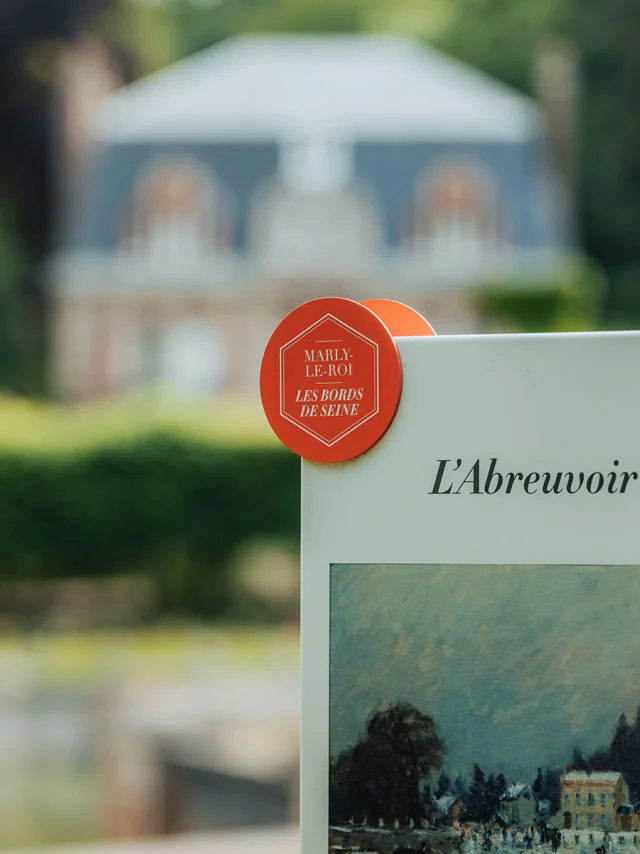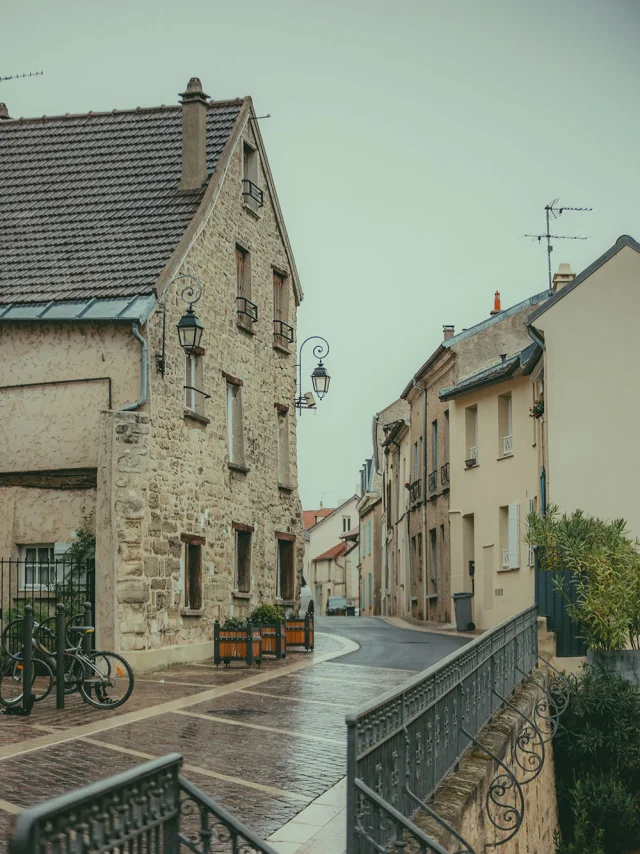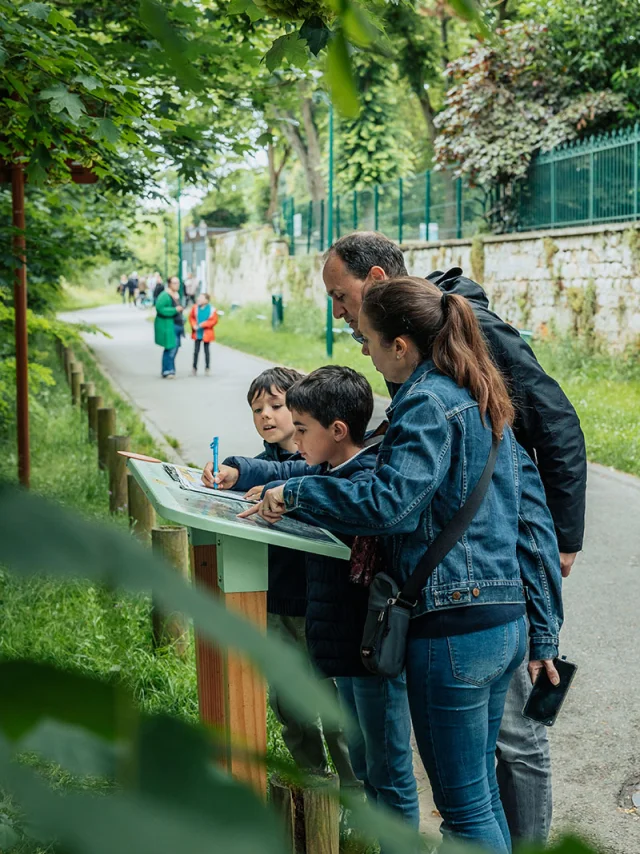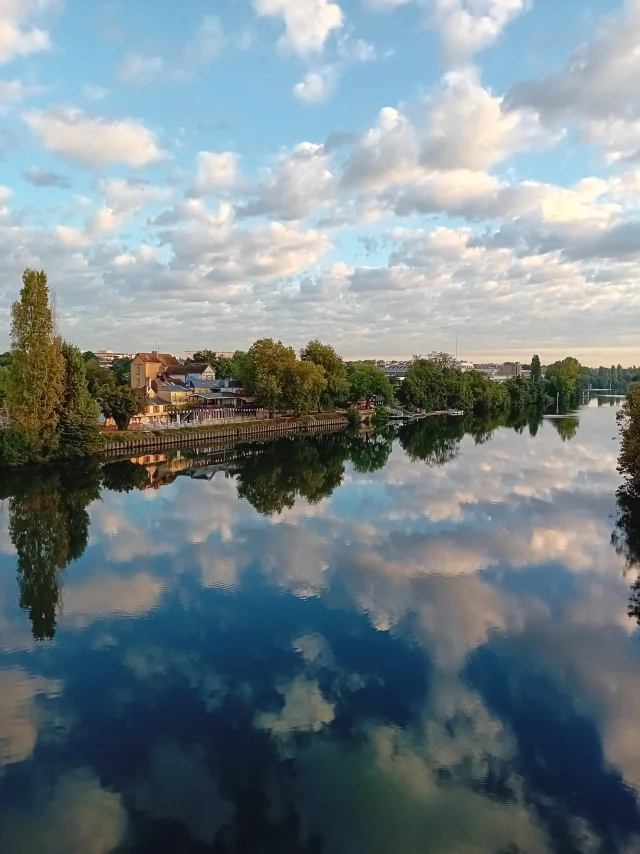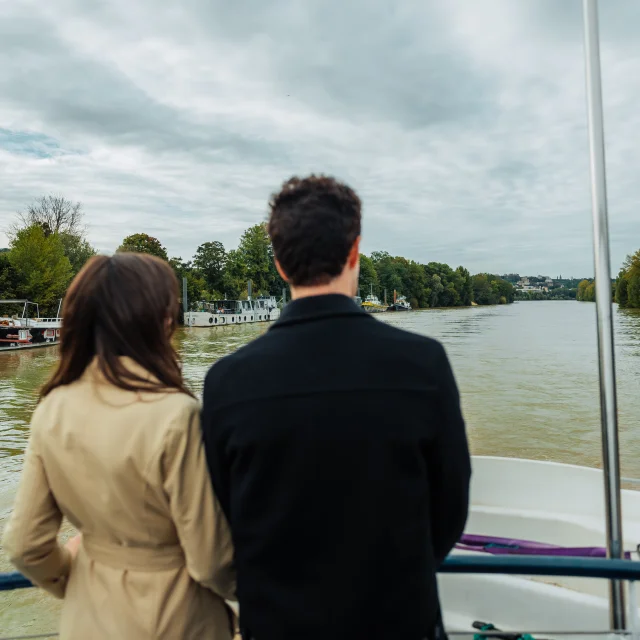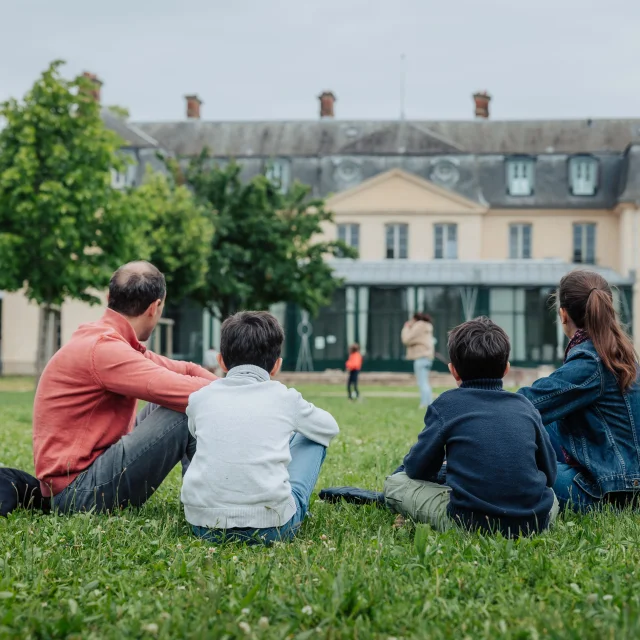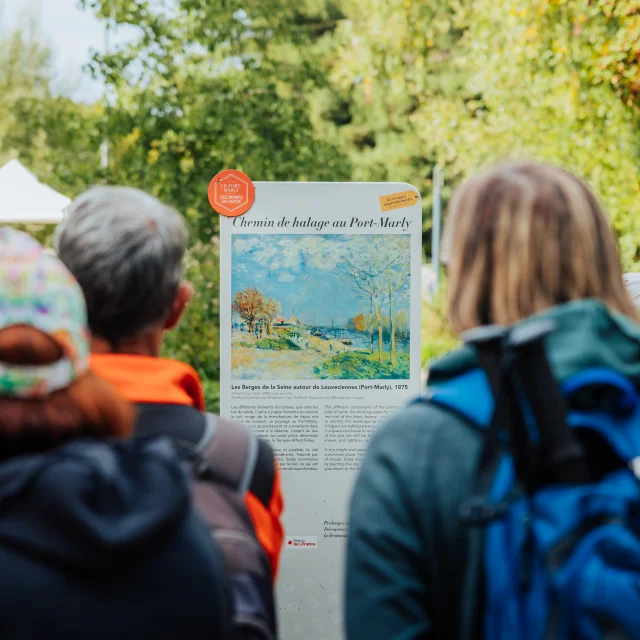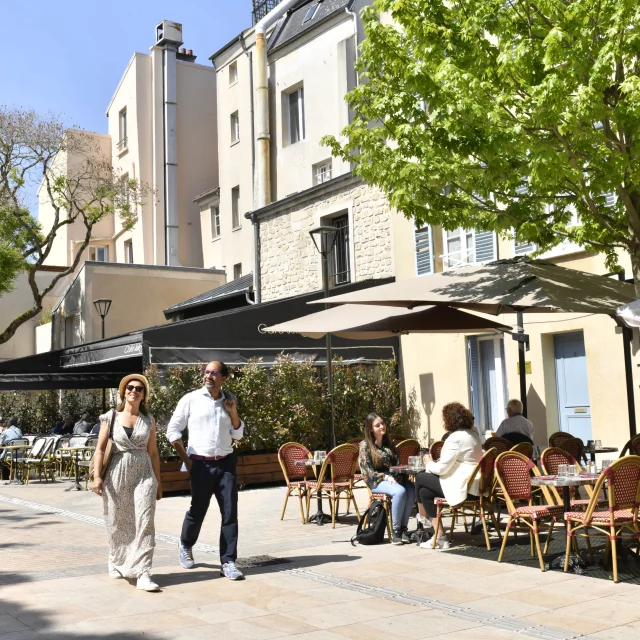Welcome to one of Saint Germain Boucles de Seine’s Impressionist trails! This route takes you on a discovery of the landscapes that inspired the greatest painters, with reproductions of paintings installed where the artists would have set up their easels.
These itineraries are part of the great adventure of Destination Impressionism, between Normandy and Île-de-France, where museums, artists’ homes and emblematic sites celebrate this major pictorial movement.
Let yourself be guided along the lanes, paths and riverbanks, and experience a timeless interlude in the heart of the settings that have left their mark on art history.
 Person looking at a sign on the Chemin des Impressionnistes in Louveciennes
Person looking at a sign on the Chemin des Impressionnistes in LouveciennesA little history
A royal village and monumental buildings
In fact, many châteaux were built here, due to the proximity of the royal court. The châteaux of Voisins and Bellevue, or Madame du Barry’s château, can still be seen today. However, what above all brought fame to the village of Louveciennes is its Aqueduct. Its 36 arches still dominate the village today. In fact, the Aqueduct was designed by Arnold de Ville and built under the direction of Jules-Hardouin Mansart, then Robert de Cotte from 1682 to 1684. The Aqueduct, the vineyards below and the church tower in the distance are a must-see feature of Louveciennes. Above all, it was one of the building blocks of one of the most beautiful hydraulic structures in France: the Machine de Marly. This machine, which by capturing water from the Seine, supplied water to the parks of Marly and Versailles. Today, the concept of the Machine de Marly and the greatness of Marly and Louveciennes are told to you in the museum of the Domaine royal de Marly, in the Domaine national. In the 19th century, it was the tranquillity of the surroundings that attracted our beloved Impressionists to Louveciennes. The village owes its charm to its hillsides, the banks of the Seine, its narrow streets and its church. Today, it is this peaceful atmosphere that continues to delight locals and tourists alike.
Renoir’s parents, Léonard and Marguerite, left Paris for Louveciennes in 1869. They settled at 17 rue de Voisins in the house known as the Pharmacie du Barry. Pierre-Auguste Renoir, who often came to see them, loved the village. He would introduce it to his studio friends, such as Pissarro and Sisley.
The latter moved to the village in 1869 for Pissarro, in 1872 for Sisley. in the spring of 1869. Camille Pissarro took up residence at 22 route de Versailles, while Alfred Sisley established his quarters at 3 route de la Princesse.
Everyday life in the heart of this village preserved from the hustle and bustle of Parisian life, the effects of rain on the cobbles, the snow, the iridescence of the water in the Seine were all sources of inspiration for the three artists, who produced numerous paintings of the village.
Pissarro, who returned to Louveciennes in 1871 after leaving in 1870 with the arrival of the Prussians, found only a few of his 1,500 paintings. He moved into the house next to his former residence and resumed work, but his works sold poorly. He eventually left Louveciennes for Pontoise in April 1872.
Alfred Sisley left Louveciennes in 1874 to settle in Marly-le-Roi. His house was opposite the Abreuvoir; he painted it 17 times. It was in 1876 that he produced his famous paintings of the flooding of the Seine at Port-Marly.
On holiday in Louveciennes
Today, the village of Louveciennes retains this village spirit in the heart of the Paris region.
You can stroll through its narrow streets, meet the association in charge of its vineyards, attend the Arches festival. For culture buffs, visit the exhibitions at the Maison de l’Etang or book your visit to Madame du Barry’s château (only a few days a year).
Louveciennes is also a playground for nature lovers, with its parks and wood on the edge of the Marly forest, but also cultural with its Paris Region Aventure application dedicated to families.
A mustto discover
The Museum of the Royal Estate of Marly, located in Louveciennes, invites visitors to delve into the history of the Château de Marly, the leisure residence of Louis XIV. Conceived as an intimate and refined place, the estate was home to the king and a hand-picked few courtiers, far removed from the etiquette of Versailles. Through works of art, models and period objects, the museum recreates the unique atmosphere of this vanished place. It also highlights the famous Machine de Marly, a major technical achievement of the 17th century, which pumped water from the Seine to supply the fountains in the gardens of Marly and Versailles.
